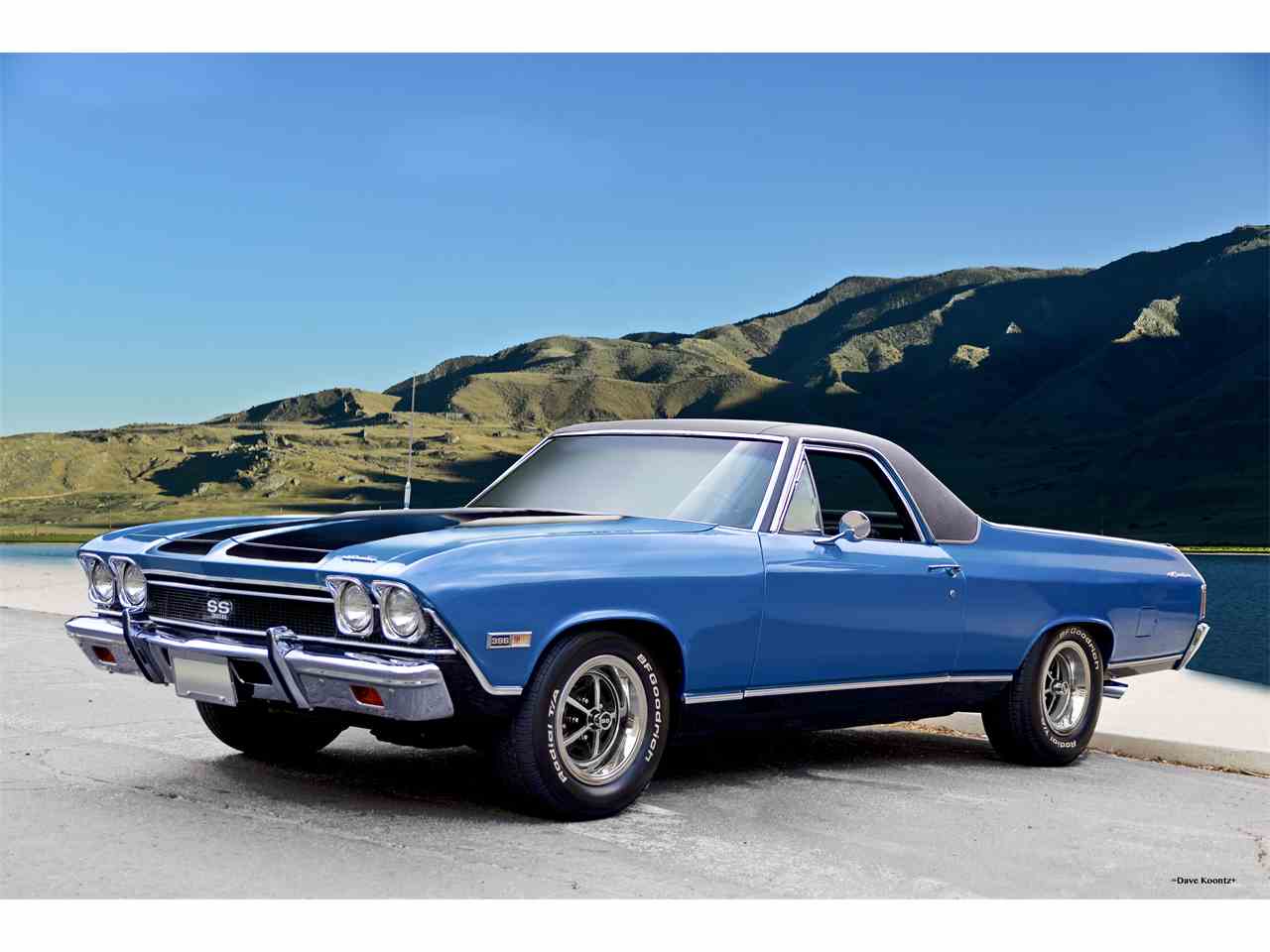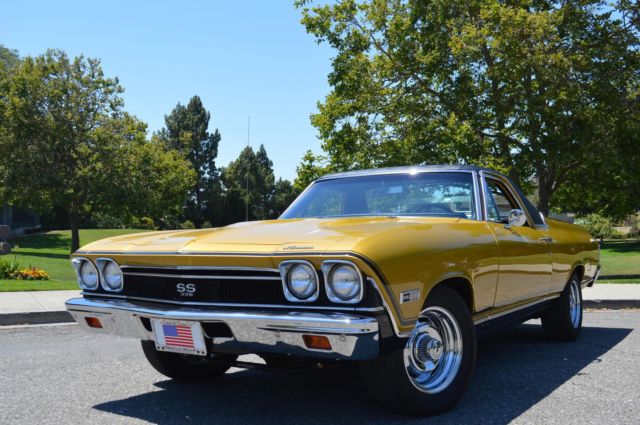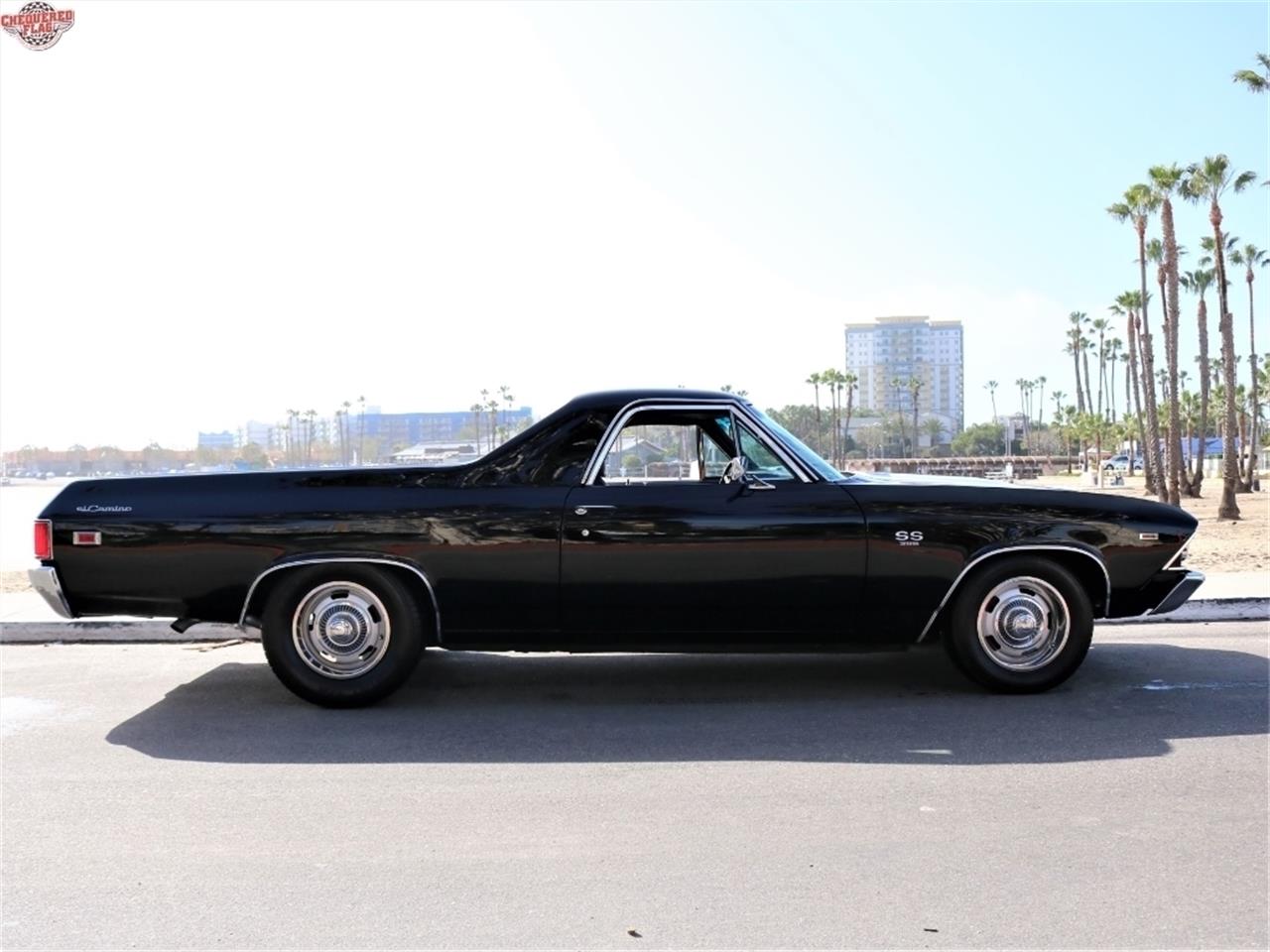

Fresh bucket seats and a console are definitely on the list of improvements for the near future. The last piece of the puzzle for this 1968 El Camino is finishing up the interior, which so far has received a roller tachometer and new clock. “The Paint and Body aren’t perfect, but that will need to wait until I hit the Pennsylvania Lottery.” Michael J Rounding out the 1968 El Camino’s modifications are a new, balanced driveshaft and several Hotchkiss suspension components which sit on upgraded body mounts. The correct bearing retainer was supplied by Auto Gear of Syracuse, NY. He also replaced the flywheel and clutch that were damaged beforehand. The transmission was rebuilt by a local expert, and the Muncie M21 was eventually as good as new with new heavy duty gears. Unfortunately for Michael, his NHRA certified mechanic did not pick up on this and ruined his billet flywheel and Centerforce clutch among other things. It was originally from an early ‘70s Blazer, which meant it had a larger truck bellhousing. The entire engine had to be rebuilt, and he discovered quite a lot during the process.


“As soon as I can scratch up an extra $20 thousand dollars. He recently replaced the 2 inch cowl fiberglass hood with a steel SS hood a few years ago, but in order to use it he had to replace the Weiand BBC manifold, but that opened up a whole new can of worms. The 1968 El Camino came to him pretty extensively modified, and Michael has been undoing certain things over the years. The old Chevelle he previously owned was traded for a Harley many years ago and he had to fill the void. If you’d like to read more about it or register to bid you can click here to visit the listing on Mecum.Michael’s always loved the style of the ’68 Chevelle, so when he found this 1968 El Camino 138 VIN SS example, he had to have it. It has a 12 bolt rear axle, a new dual chamber exhaust, bucket seats, and a console restored to factory style black vinyl.ĭuring the restoration the car was fitted with new glass (with weather stripe and gaskets), it also now has an upgraded stereo, a new Vintage Air air conditioning system, new power disc brakes, and one-piece Scott Drake wheels with raised letter tires. The 1968 Chevrolet El Camino SS you see here benefits from a complete frame-up rebuild, it still has its original numbers-matching 396/325 hp engine and power is sent back through an upgraded 200R4 transmission with overdrive. The 1968 Chevrolet El Camino SS Shown Here The styling and performance of the third generation El Camino remains popular with collectors and enthusiasts today and they typically fetch a price premium over the more recent models. Strato bucket seats, a center console, power front disc brakes, and the Positraction rear end were optional extras.

#1968 EL CAMINO SS 396 VALUE DRIVERS#
The significant power output of the engine did catch more than a few El Camino SS drivers by surprise, the front-weight bias of the cars (with an empty rear tray of course) combined with the rear-wheel drive made it startlingly easy to spin the rear tires – much to the delight of any fan of burnouts.Ĭhevrolet built the third generation El Camino on the Chevelle station wagon/four-door sedan platform, and it also shared some Chevelle Malibu exterior and interior trim.
#1968 EL CAMINO SS 396 VALUE MANUAL#
The standard El Camino SS came with a three-speed manual transmission however buyers could opt for either a four-speed or an automatic. This engine was built with solid lifters, big-port heads, and an 800 cfm Holley four-barrel carburettor on a low-rise aluminum intake manifold. The 1968 Chevrolet El Camino SS you see here was part of the third generation of the El Camino, the SS was the highest performance version and was fitted with a Turbo-Jet 396 cu. These vehicles became major cultural touchstones in the United States and in Australia, though they’ve largely fallen from favour in recent years. There were a number of benefits to this design – the key advantage is the improved handling over a regular pickup truck, and that these vehicles frequently have all the creature comforts of their road car siblings.Ĭoupe utility vehicles, known as “ utes” in Australia, have been a popular choice for people who need to carry loads but don’t want a traditional pickup. The El CaminoĬhevrolet sold five generations of the El Camino between 19, and they all shared the same basic characteristics: they were based on a road car platform with a front engine, rear wheel drive layout, they had two doors and a pickup bed in the back with a fold down tailgate. The Chevrolet El Camino SS was the high performance version of the standard El Camino – a car that had been released in the 1959 model year to compete with the successful Ford Ranchero pickup.Īrguably the El Camino would go on to the the more famous of the two, and the most famous of the American coupe utility vehicles.


 0 kommentar(er)
0 kommentar(er)
